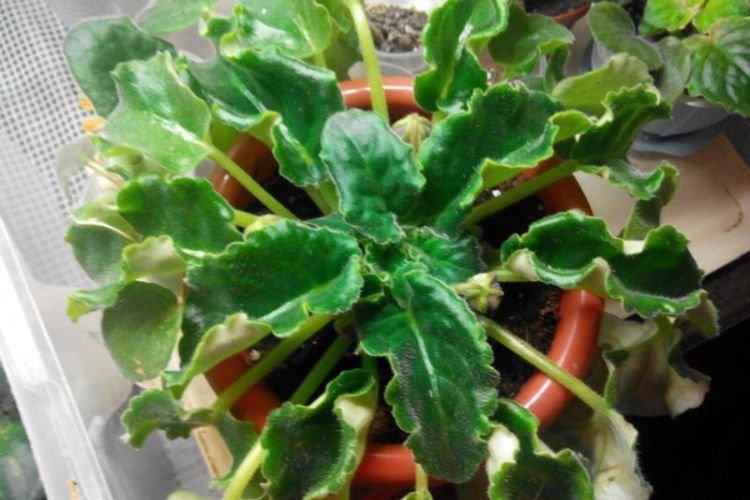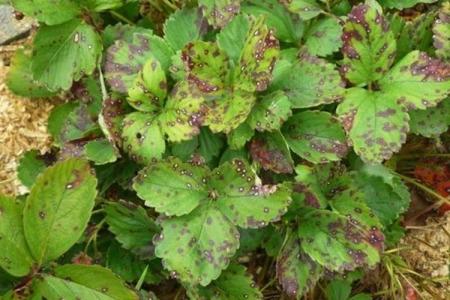
Delicate violets perfectly decorate houses, apartments and gardens. Dozens and hundreds of species delight flower growers around the world. It seems that everything is already known about them, but all the same, the owners periodically encounter unpleasant diseases. To spot the problem in time, periodically inspect the leaves of the flowers!
Leaves turn yellow and dry
It's a shame if the large violet leaves start to dry, especially when they shouldn't. But this is exactly the problem that growers face most often!
- Violet leaves turn yellow and wither if the conditions of detention are not suitable for it, because each variety has its own characteristics;
- Leaves can turn yellow if water constantly gets on them during watering;
- Ring yellow spots appear in winter when the flowerpot is in a draft;
- The plant turns yellow, becomes stunted and lethargic due to root rot. Then urgent drying and transplanting with fungicide treatment is needed;
- Thrips leave wide yellow paths on the leaves when they eat the flesh.
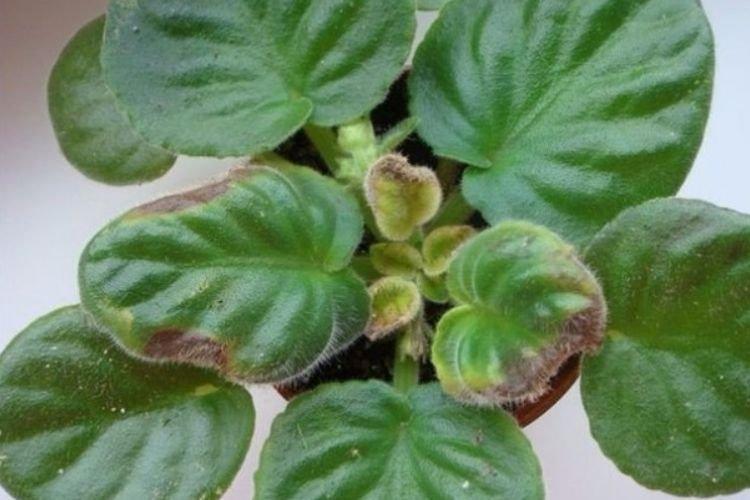
Brown spots on violet leaves
Domestic violets rarely suffer from fungus, but this happens much more often with street beds. And the first symptoms may be rusty, brown or brown spots on the leaves.
- Large brown spots appear on delicate leaves from cold and drafts;
- Leaves turn brown when the violet lacks nutrients. Indeed, during flowering, it absorbs them twice as actively;
- Textured red spots appear when damaged by rust. She loves wet but rather cool days. Sometimes there are orange bumps-pads;
- Brown soft shoots and leaves are a sure sign of the brown rot of the same name, which most often affects young plants;
- Brown spots on the leaves due to late blight dry and spread almost before the eyes;
- The leaves begin to darken and rot from the stem and petiole if the violet is sick with fusarium. The disease affects the root system, and it is almost impossible to cure it;
- Chaotic brown streaks in combination with a cessation of development indicate an incurable bronze virus;
- Leaves darken at the edges when the violet soil is too wet and needs to be dried.
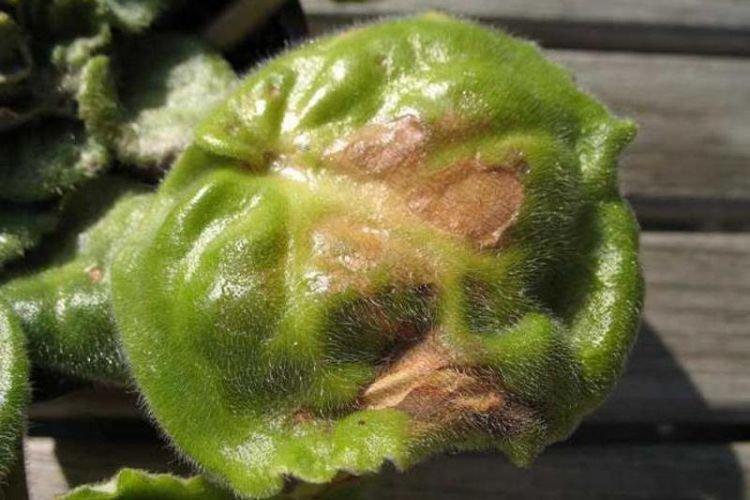
White bloom on violet leaves
At first, a white coating may seem like a thick layer of dust. Violet leaves are textured in themselves, so at first it is not very visible to the poet, plaque on them or cobwebs.
- Intense white bloom leaves powdery mildew - one of the most common fungi on plants;
- A grayish bloom on brown softened leaves is a symptom of gray rot or botrytis;
- A pale slimy plaque on hot summer days is a sign of vascular bacteriosis. It is urgent to establish ventilation and lower the air temperature;
- Large white flakes throughout the plant indicate the presence of a mealybug;
- A silvery coating that quickly darkens or turns red, appears due to downy mildew.
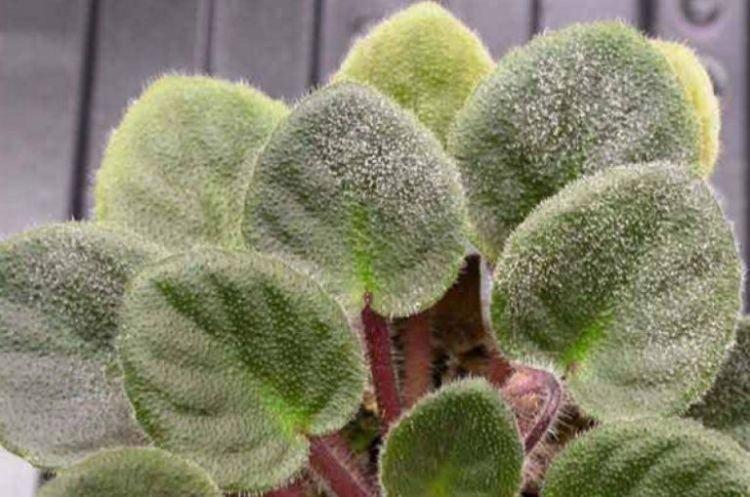
Pale and light leaves
Most varieties of violets grow with beautiful ornamental leaves, so it is fairly easy to spot when they fade and fade. Find out the reason and correct the care as soon as possible - then the flower will recover on its own!
- Sucking insects draw out all the juices from the violet, and it fades and withers;
- Nematodes eat the root system, which is why the ground part grows weak, lethargic, pale and deformed.
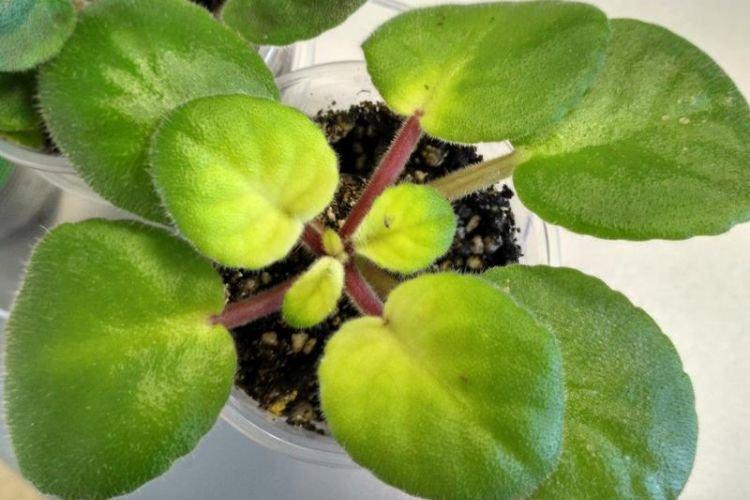
Violet leaves curl
Violets are not very susceptible to curly viruses, but it is still important to be aware of their existence. True, most often twisting is a symptom of a banal improper care.
- If the violet lacks light, new leaves grow dull, small and on long stalks.In this case, the edges of the plate are twisted upward;
- If the leaves rise and wrap up completely - it's time to thin out the outlet;
- The violet withers and curls if it is too hot from the heating devices or lacks moisture;
- If there is too much light, the edges of the leaves may curl inward. With constant overflows, the effect will be the same;
- Less commonly, a tiny and almost imperceptible cyclamen mite becomes the cause of violet leaves curling.
